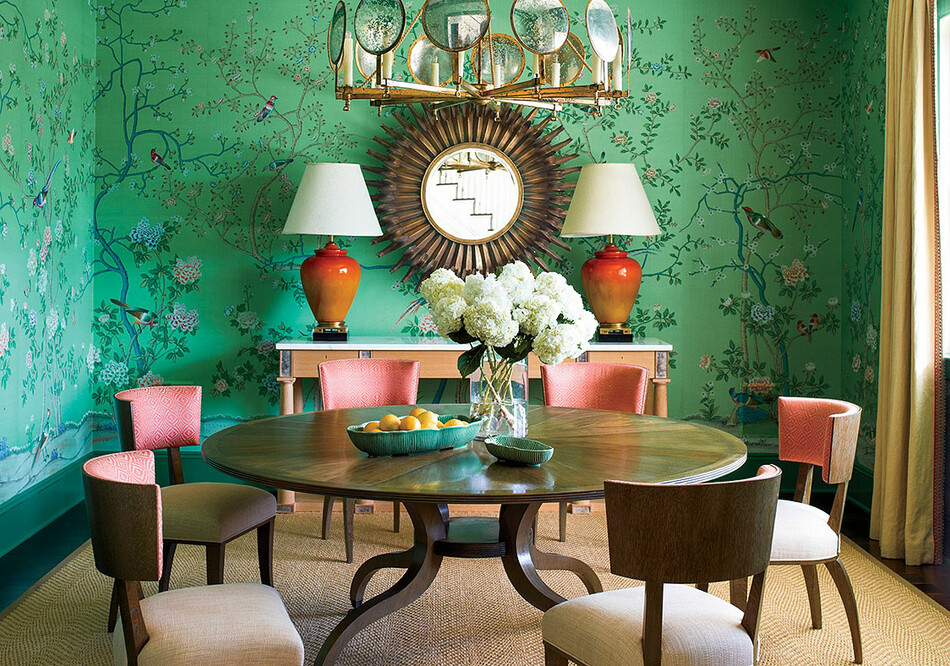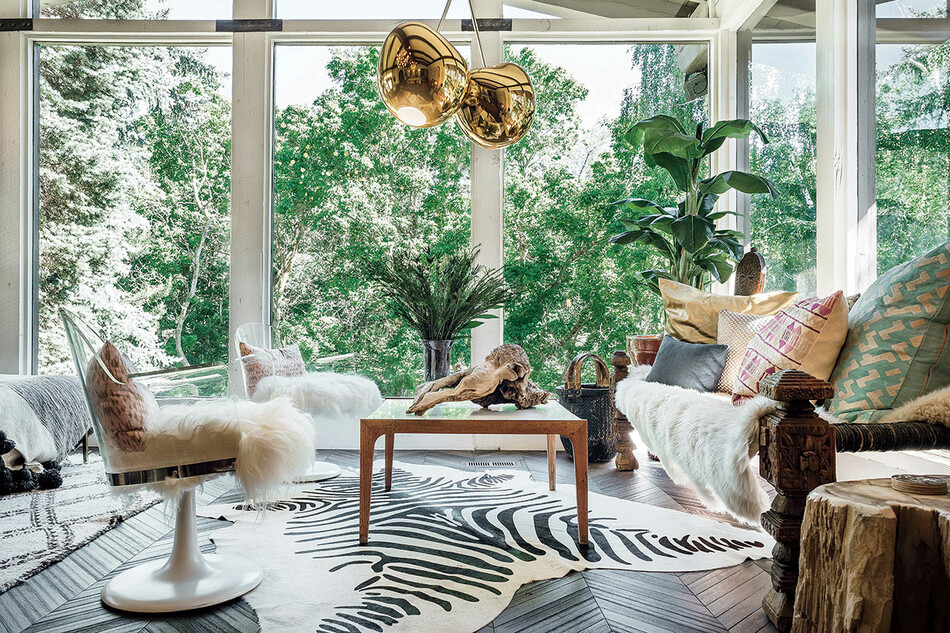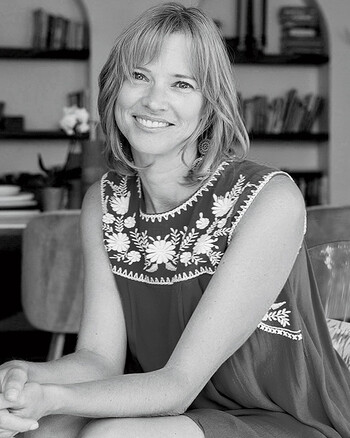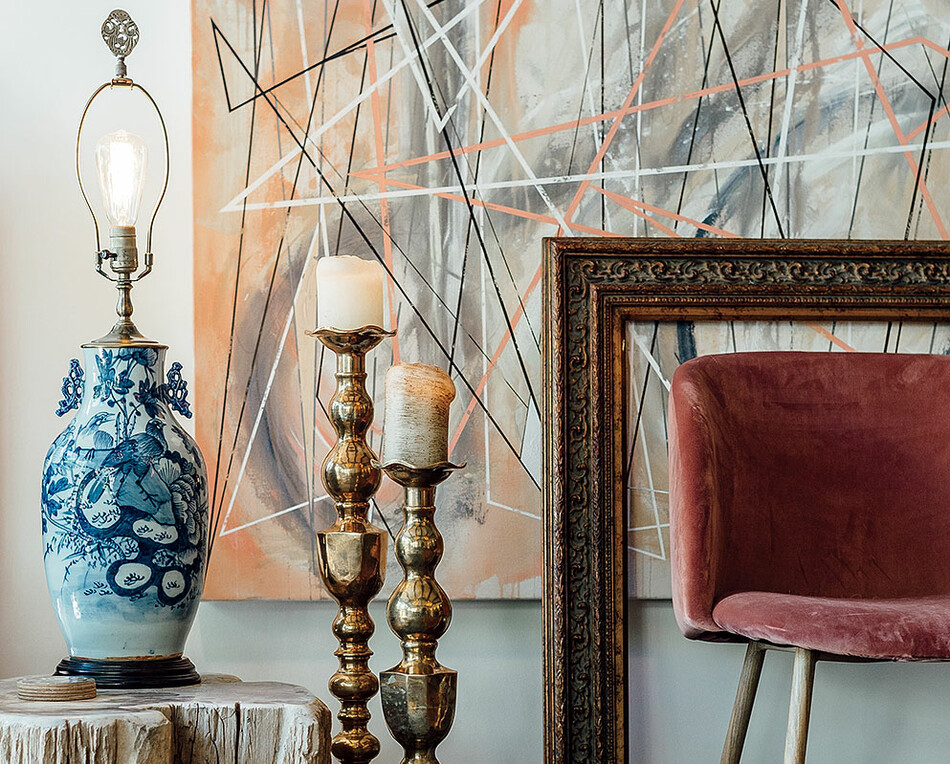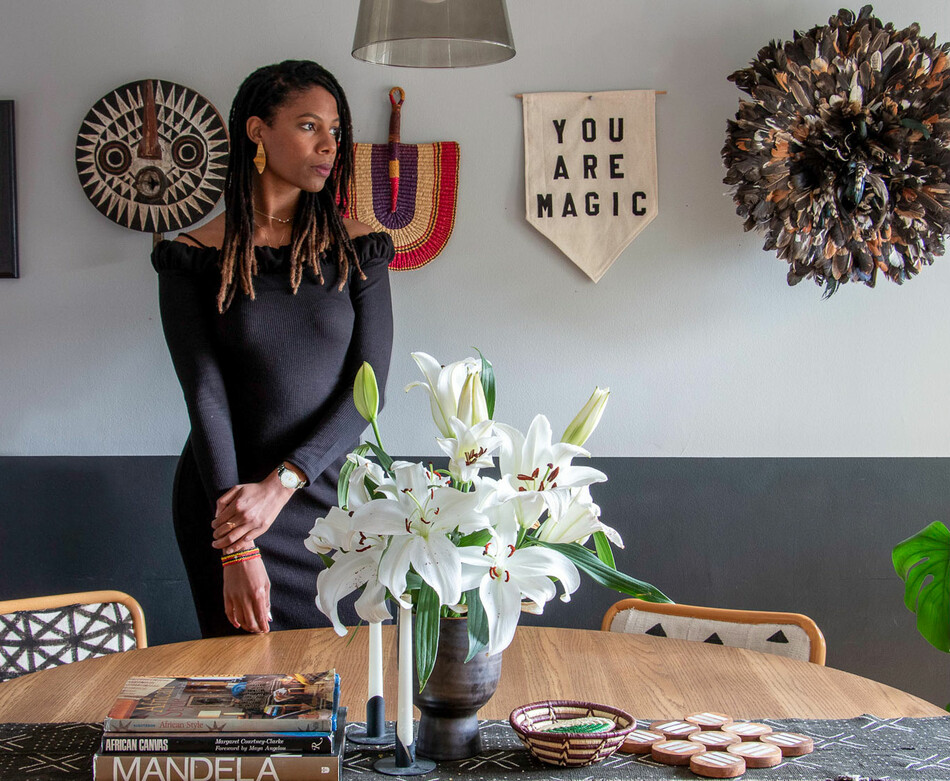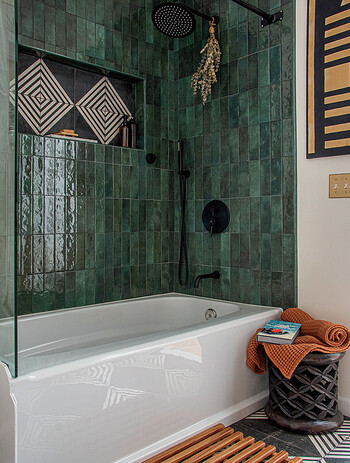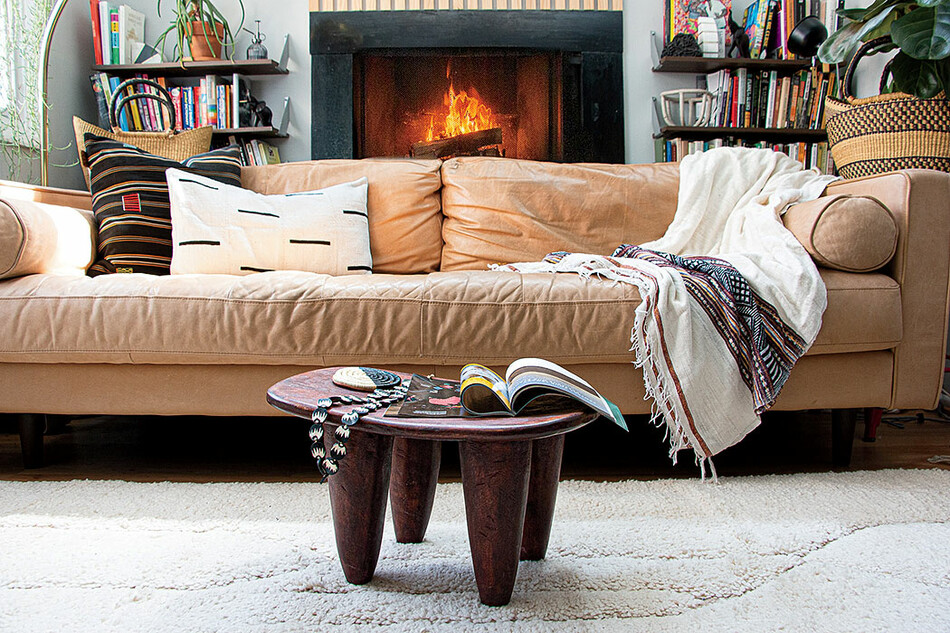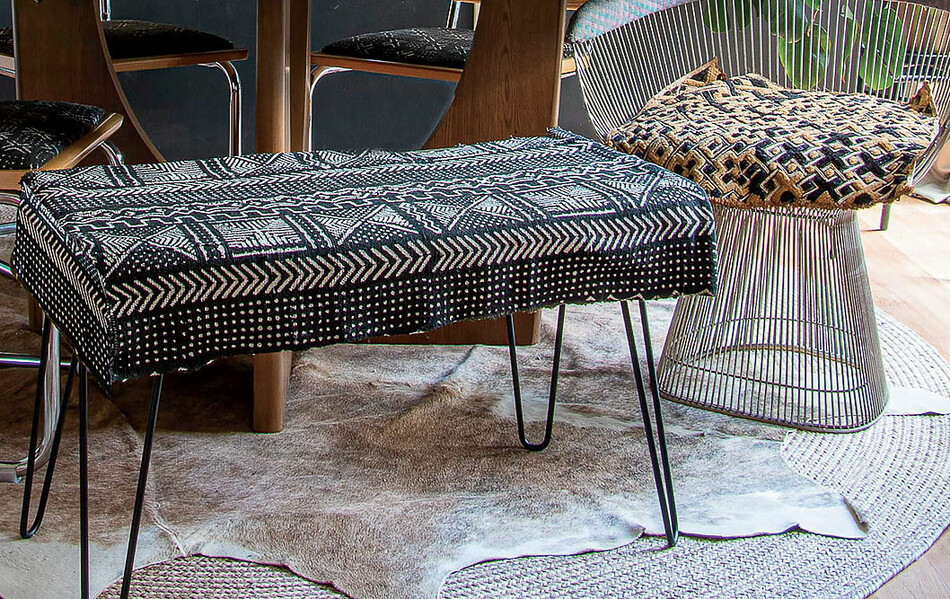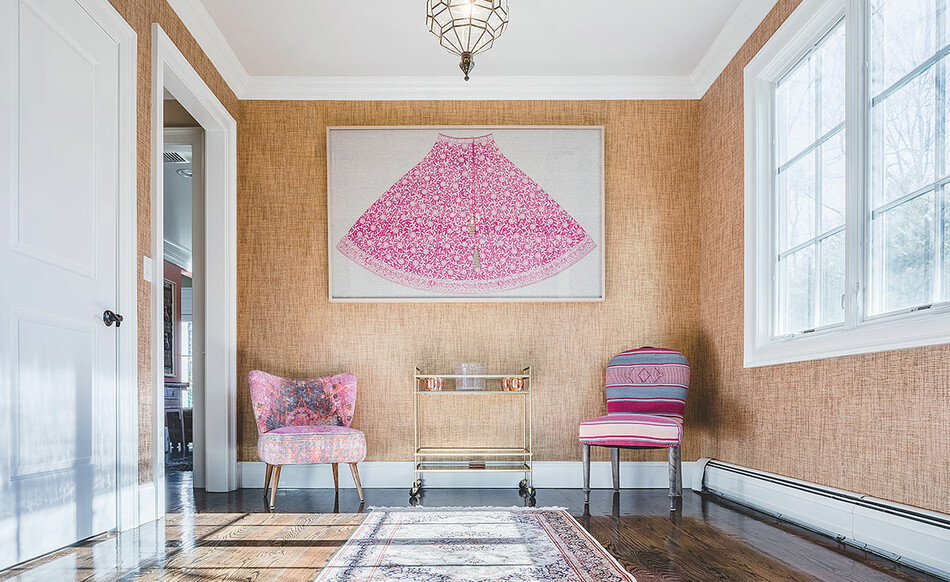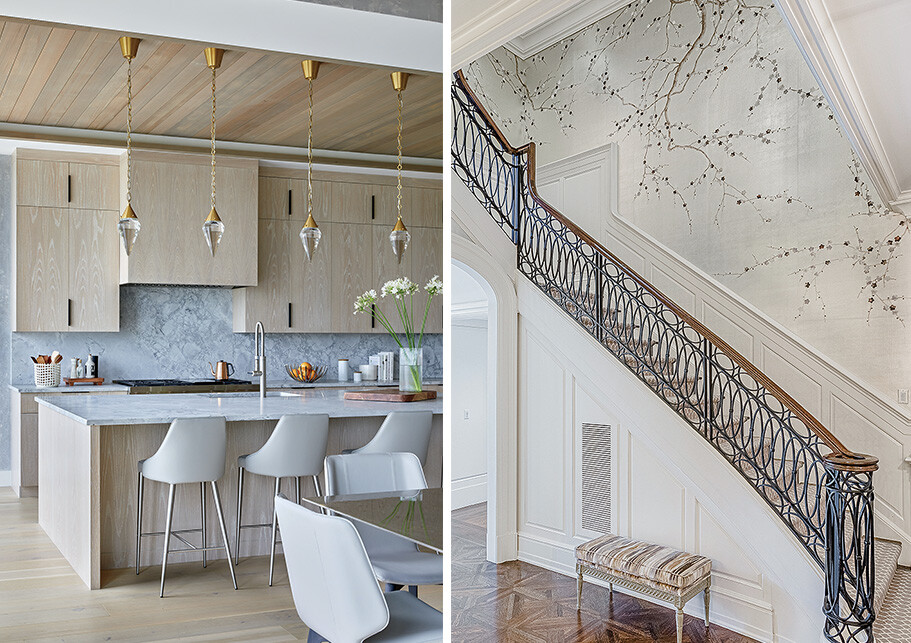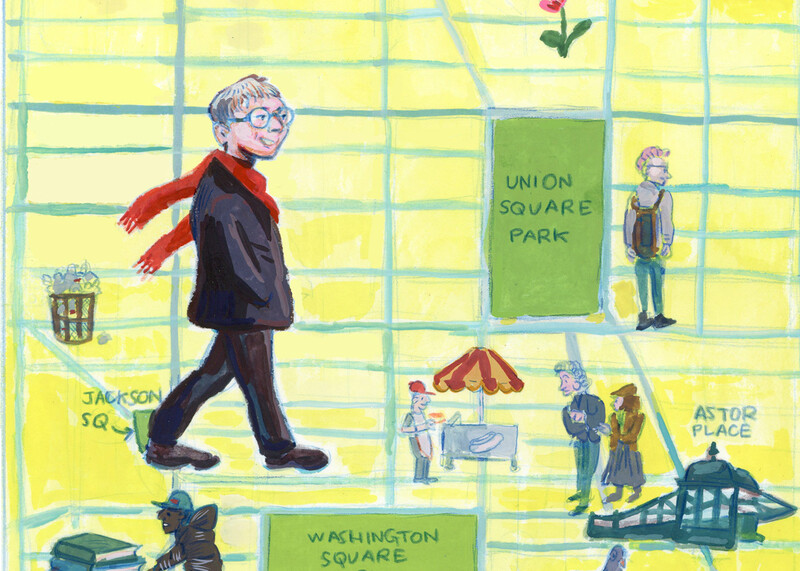How to Revamp Your Home in 2025
Gideon Mendelson
As the founder of Mendelson Group, Gideon Mendelson ’96CC has been configuring New York interiors since 2003.
Signature aesthetic
Timeless and eclectic modernism. We lean classicist when it comes to architectural details — maintaining original elements from historic homes, for instance — but with furnishings, the 1930s through ’60s is really our wheelhouse.
Preferred wall treatments
Decorative finishes or wallpaper: they add texture, pattern, and a level of depth that can’t be achieved with ordinary paint.
On mixing patterns and colors
Maximalist design is popular now, but I do it in a restrained way. The key is to layer patterns that are not competing in scale. For example, if you’re choosing a wallpaper with a floral design and also have patterned upholstery, make sure the flowers on the wallpaper and the details on the upholstery are different in size.
I recommend using a color wheel to find complementary or analogous combinations that work. Sometimes I’ll find a painting I love — perhaps something abstract from the 1950s or ’60s — and steal the palette. Josef Albers’s color-study paintings are great reference points.
Choosing the right colors requires knowing your tastes. Take a look in your closet — what are you wearing every day? Which palettes make you the most comfortable? I find pale blues and greens calming, because they remind me of nature, but someone else might find red relaxing. Trust your gut.
Dorothy Day Huntsman
Dorothy Day Huntsman ’00GS, founder of the Salt Lake City firm Dayhouse Studio, specializes in biophilic design, which integrates nature into homes to support mental and physical well-being.
Biophilic benefits
The approach is rooted in the idea that humans benefit from natural surroundings. Studies have shown that nature-centric, relaxing spaces can reduce stress and enhance cognitive function.
Biophilic design also promotes environmental responsibility: we incorporate solar panels, ventilation, and natural light, while improving indoor air quality with plants and limewash paint.
Elements and accents
Natural materials like wood, stone, and organic fabric. We embrace imperfection through timeworn furniture and weathered textures that lend themselves to a lived-in feel, while using decor like gemstones, sheepskin throws, and brass or copper to add organic warmth. Soft ambient lighting — what we call “soupy” lighting — promotes a calming atmosphere, along with fountains and aquariums. Ideally, every window should overlook gardens or landscapes, but if you’re in a city apartment, you can use houseplants to bring the feeling of outside inside.
Furnishing faux pas
Overcrowding a room, using lighting that strains the eyes, and choosing style over comfort. I also dislike the obsession with “fast furniture” made with cheap synthetic material. Many of those products contain harmful chemicals like VOCs and are poorly made, resulting in a throwaway culture that’s wasteful and unsustainable. Investing in high-quality natural furnishings, or using quality gently used items, promotes spaces that are not only healthier but also timeless.
Nasozi Kakembo
Nasozi Kakembo ’08GSAPP is the founder of xN Studio, a Brooklyn- and Uganda-based design firm and retailer focused on decorative items from African artisans. Kakembo’s first book, The African Decor Edit, was published this fall.
African decor essentials
Organic materials, neutral colors, geometric designs, and traditional objects like art, stools, and baskets. Woven baskets have historically been used throughout Africa for purposes like fermenting beer and carrying wedding dowries, but today they’re popular for storage in homes around the world. I like to use them as planters, as hampers, and to hold fruit.
Objects with stories and impact are so much more than “things,” and ethical sourcing — which I define as purchasing heritage-related goods in a way that directly benefits their community of origin — is a core tenet of my design philosophy.
Best decorating advice
It’s important to take your time. I tend to have all of my design ideas mapped out in my head as soon as I see a space, but I give myself permission to feel out different components over time. I’ve been in my current home for almost a year, and I only just decided on a new light fixture for the kitchen. Feel free to swap the functions of rooms as your space evolves with your lifestyle.
Design pet peeve
I don’t love rainbow-organized books on bookshelves. Nothing against rainbows! I love them in the sky and on flags, but not on bookshelves, where, in my opinion, books should be organized by topic or genre, not by color.
Shelley Cekirge
Shelley Cekirge ’05SOA studied acting and theater design at Columbia before founding Shelley Cekirge Interiors, a New Jersey–based firm.
Color approach
Columbia’s MFA program was instrumental in my development as a creative person and taught me to think about art in a different way. As a designer, I often start with a neutral palette for the walls and furniture before adding colorful accents like artwork, throw blankets, pillows, vases, coasters, and coffee-table books.
Kitchen and bathroom trends
For kitchens, people are gravitating toward pendant lights, unique hardware, and countertops that connect to matching backsplashes, which eliminate the need for tiles and are easy to clean.
I also see a lot of synthetic surfaces like engineered quartz and porcelain used in place of marble. These options are durable and practical, especially for messy or high-traffic spaces. Of course, nothing can replicate the beauty of natural stone.
Common mistakes
Oversized furniture that inhibits traffic flow. Using a floor plan is key to determining furniture size. I also see people trying to keep old furnishings, thinking that if they reupholster or refinish them, they will save money. You’re often better off buying new items.
I generally stay away from anything too blingy. If you’re going in a whimsical direction, balance the design out with organic elements such as wood and neutral tones so you don’t feel like you’re living in a Liberace fever dream.

